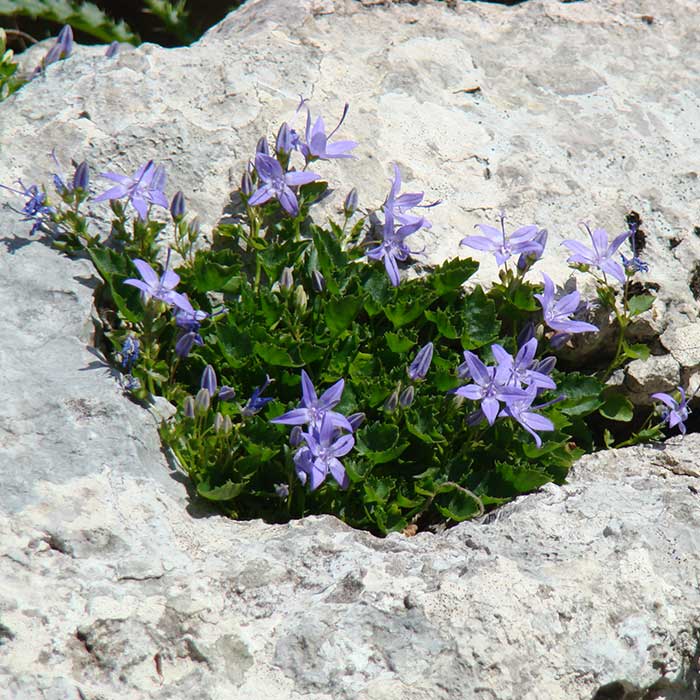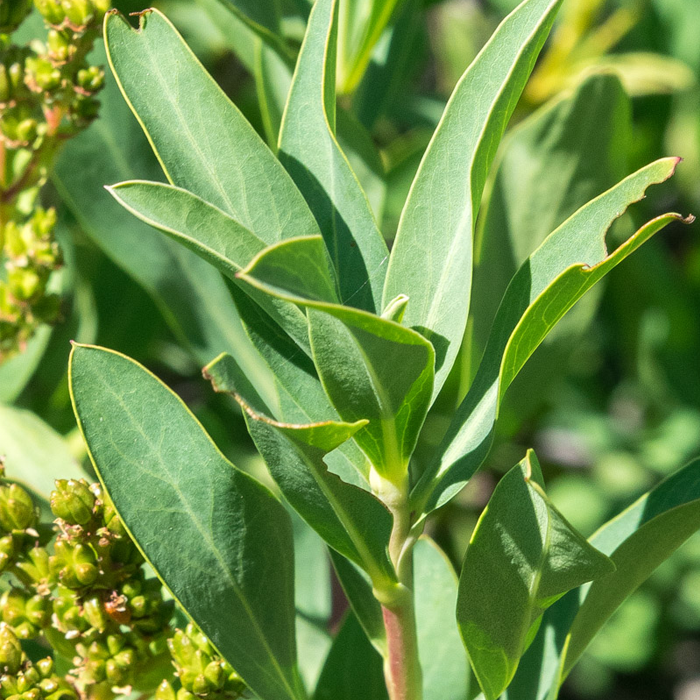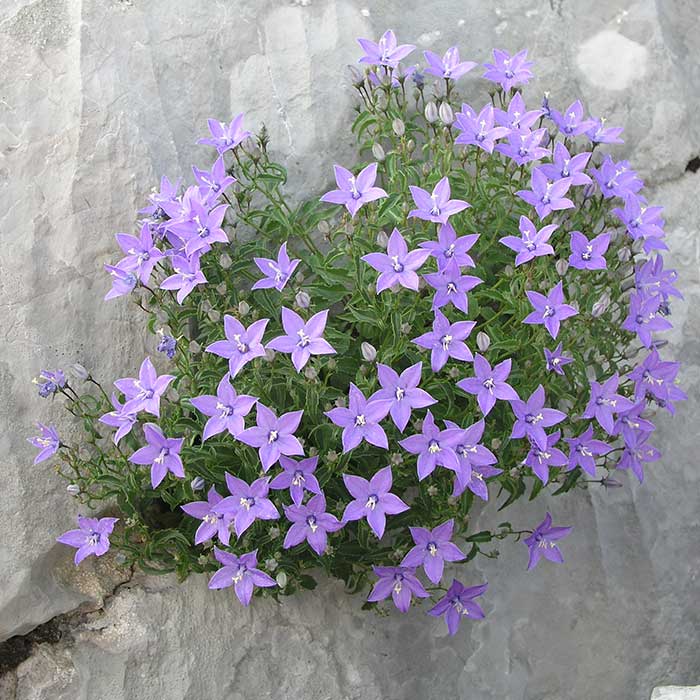Flora
Topić J., Nikolić T., Vuković N. (2010): Velebit. U Nikolić T., Topić J., Vuković N. ed.: Botanički važna područja Hrvatske (Botanically relevant areas of Croatia). Faculty of Science, University of Zagreb and Školska knjiga d.o.o., Zagreb, 440 ‒ 453.
The Velebit massif is certainly one of the most important if not the most important floristic area of Croatia and one of the most important centres of the European biodiversity. It is characterised by a large number of plant communities and distinct altitudinal zonation. In the area of Velebit, there are about 2000 plant species and subspecies, many rare, endangered, endemic and protected plants, some of which are only found on Velebit, e.g. Velebit degenia (Degenia velebitica), window bellflower (Campanula fenestrellata) and Croatian grassy bells (Edraianthus graminifolius var. croaticus). Today’s flora on Velebit is the result of the interaction of two vegetation zones ‒ middle European and Mediterranean. It was developed under a somewhat weaker impact of deglaciation so the tertiary species mostly avoided total icing (numerous species found on limestone rocks, in screes and alpine grasslands) and are known today as endemics or relicts. Such a tertiary relict is for example the well-known Croatian sibirea (Sibiraea altaiensis ssp. croatica).
The floristic relevance of this area is additionally increased by glacial relicts, plants that were much widely spread during the glacial period and remained today in isolated places with a colder microclimate (e.g. edelweiss (Leontopodium alpinum), spring gentian (Gentiana verna) and others).

Velebit degenia Degenia velebitica
It grows mainly on finer and calmer screes facing south-east and in rock crevices. It is an endemic plant from the north-west Dinarides, found only on Velebit. It grows in the crevices of shadowy, relatively moist rocks and on separate blocks of stones in beech forests (500 – 1700 m). It flowers in May and June.

Window bellflower Campanula fenestrellata
It predominantly grows in partial shadows, on stone blocks and in beech forest caves but is also frequently found in crevices of dry, south-facing, sun-exposed rocks lowering into deep valleys (600 – 1300 m). It flowers in July and August

Croatian sibirea Sibiraea croatica
It is a strictly protected plant which grows on rocky slopes, in rock crevices and between stones, predominantly on west slopes of Velebit and at an altitude between 950 and 1000 m, only exceptionally between 800 and 1550 m. It flowers in June and beginning of July.

Waldstein bellflower Campanula waldsteiniana
It is an endemic Croatian species which grows in pulvinar shapes in sun-exposed rock crevices but also on caves and stone blocks in beech forest, in mountain and sub-mountain areas (500 – 1600 m). It flowers in July and August.
The Velebit massif is certainly one of the most important if not the most important floristic area of Croatia and one of the most important centres of the European biodiversity.
In general terms, the prevailing habitats on Velebit are forests; mountain meadows and pastures scattered in them play a very important role in the conservation of overall biodiversity.
The most widespread forest communities in the mountain vegetation belt are beech forests with large red dead nettle (Lamio orvalae-Fagetum), encountered in areas below the altitude of 900 meters. Above the threshold of 800 meters, one finds Dinaric beech and fir forests (Omphalodo- Fagetum). Coastal beech forest with autumn moor grass (Seslerio autumnalis-Fagetum) grows on rocky plateaus exceeding the 1000 meter altitude mark. In the altitude zone between 1,100 and 1,650 meters, marked by abundant snow, brief vegetation periods and strong winds, one comes across subalpine forests of beech and hollyfern (Polystycho lonchitis-fagetum), with characteristically bent trees due to the pressure exerted by the long retention of snow.
The landscape of peak areas is marked by barren karst formations mixed with forest valleys and dry grassland areas.





